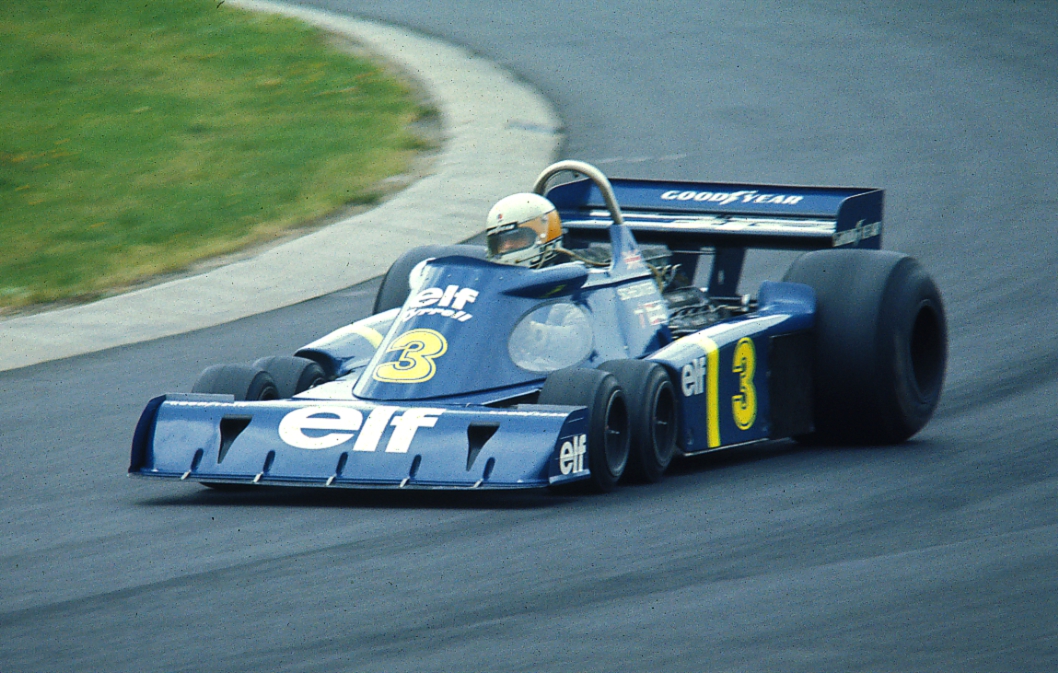Tyrrell-Ford P34
Car: Tyrrell-Ford P34/ Engine: V-8 Ford-Cosworth DFV / Maker: Tyrrell / Bore X Stroke: 85.7 mm X 64.8 mm / Year: 1976 / Capacity: 2,993 cc / Class: Formula 1 / Power: 485 bhp at 10,600 rpm / Wheelbase: 96.6 inches / Track: 48.6 inches Front, 58 inches Rear / Weight: 1311.8 lbs
When “uncle” Ken Tyrrell rings you up and says : “Can you come over, I’ve got something to show you”, you don’t ask: “What?” or “Why?”. One thing about Ken, and I have known him for 40 years, is he never called a spade shovel; you know exactly where you stand with him, right or wrong. So one morning in September 1975, having just got back from Monza, I got on my motorcycle and rode over to Ken’s house in West Clandon, and after a welcoming cup of coffee he said: “Come out into the garden”. Totally unprepared for what to expect, I followed him out to the lawn and my mouth fell open, and a look of total disbelief came upon my face. Ken roared with laughter as I stood there speechless, and to this day he still has a chuckle at the memory of “Jenks speechless”. Denis Jenkinson describing the first time he laid eyes on the Tyrrell P34.
No Subscription? You’re missing out
Get immediate ad-free access to all our premium content.
Get Started



